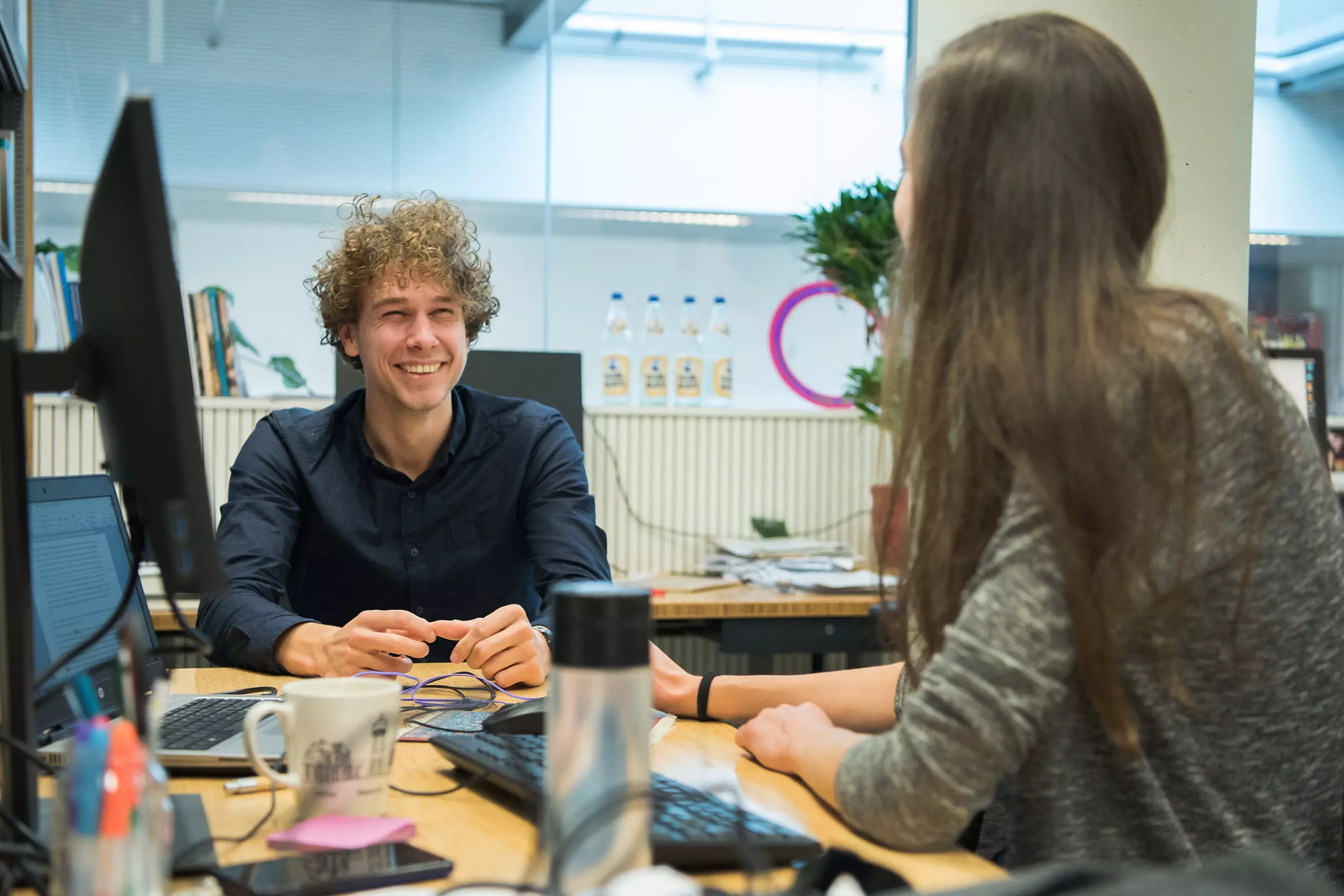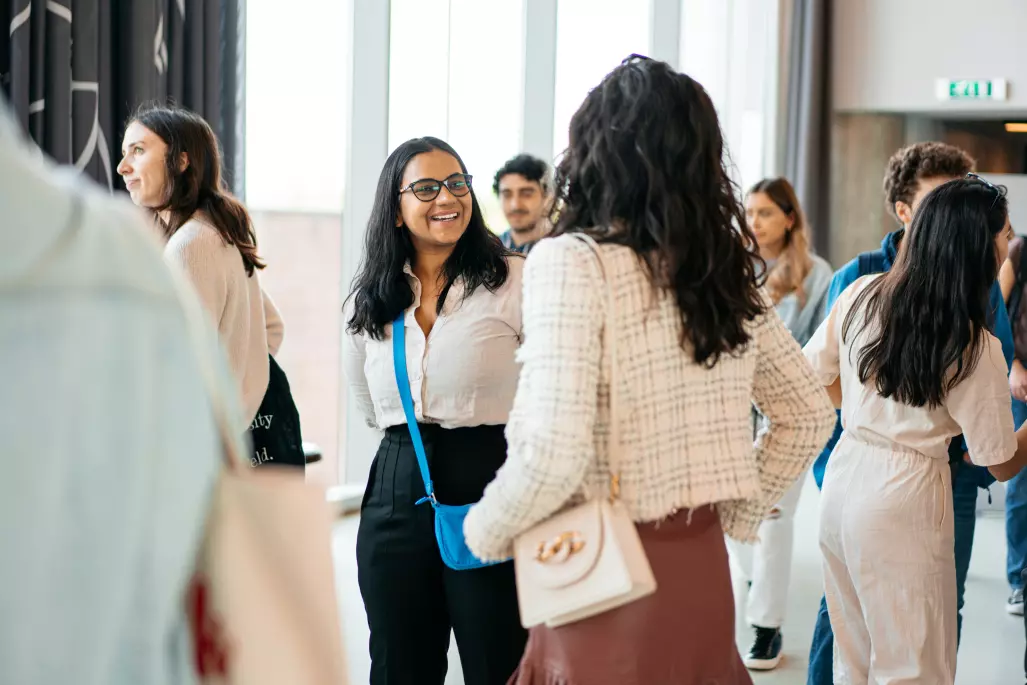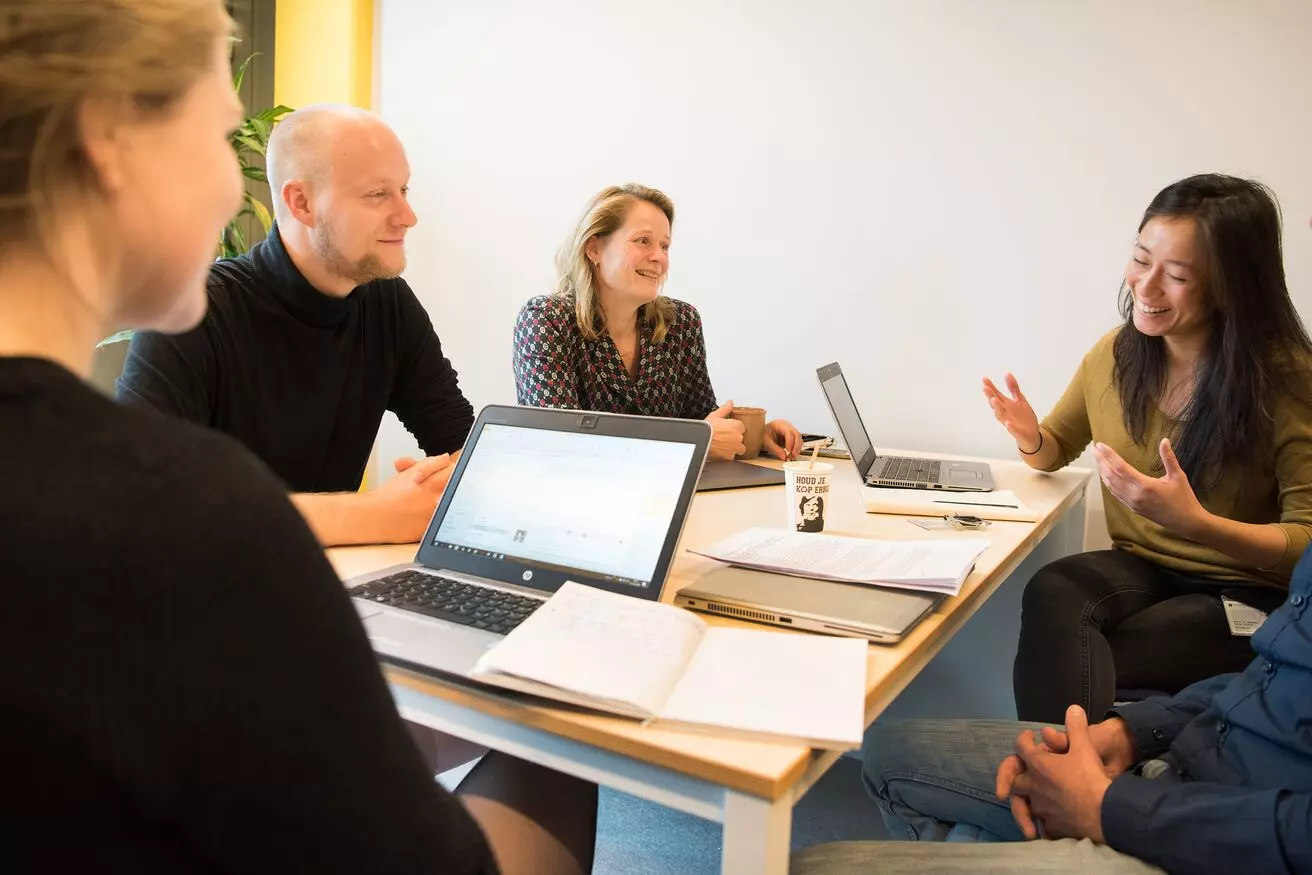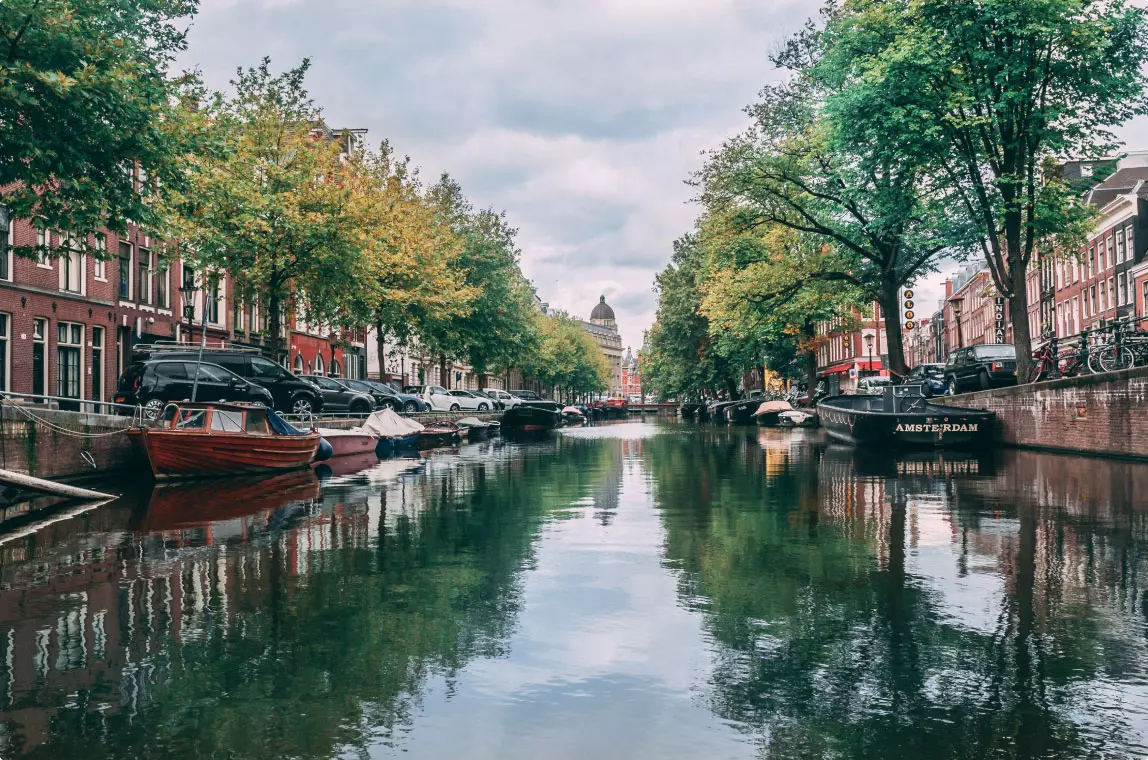
Are you fascinated by the molecular interactions that drive cellular processes and functions? Are you excited about using advanced microscopy methods and fluorescent probes to study cellular signalling? Then this may be the right job for you!
PhD Candidate in Cell Biology and Microscopy
- Faculty of Science
- 14245
- Master's
- €3.059 - €3.881
- 38 hours
- Closes on17-08-2025

Are you fascinated by the molecular interactions that drive cellular processes and functions? Are you excited about using advanced microscopy methods and fluorescent probes to study cellular signalling? Then this may be the right job for you!
PhD Candidate in Cell Biology and Microscopy
- Faculty of Science
- 14245
- Master's
- €3.059 - €3.881
- 38 hours
- Closes on17-08-2025
Working at the UvA
Join us!
We are looking for a PhD candidate to study the molecular and cellular control of the barrier function of endothelial cells. Specifically, we want to study the dynamics of the cellular junctions and the connected cytoskeleton using super resolution microscopy.
You will be part of the team of Molecular Cytology at the Swammerdam Institute for Life Sciences in the Faculty of Science at the University of Amsterdam and have access to the van Leeuwenhoek Centre for Advanced Microscopy. The project is part of the Vascular Immunology Consortium, an ambitious interdisciplinary research initiative supported by the University of Amsterdam. This consortium bridges the Faculties of Life Sciences and Medicine, fostering a highly collaborative and integrative research environment. The overarching objective of the consortium is to elucidate the complex mechanisms by which the vascular system regulates the human immune response, with a particular focus on how vascular integrity and function are modulated under inflammatory conditions, including leukocyte extravasation and the biophysical stresses imposed by hypertension and blood flow.
This consortium offers three PhD positions at the UvA Faculty of Science. For more information about the other two PhD positions, check PhD Candidate in Experimental Biological Physics of Cardiovascular Systems and PhD candidate in Machine Learning and molecular modelling.

Working at the UvA
Join us!
We are looking for a PhD candidate to study the molecular and cellular control of the barrier function of endothelial cells. Specifically, we want to study the dynamics of the cellular junctions and the connected cytoskeleton using super resolution microscopy.
You will be part of the team of Molecular Cytology at the Swammerdam Institute for Life Sciences in the Faculty of Science at the University of Amsterdam and have access to the van Leeuwenhoek Centre for Advanced Microscopy. The project is part of the Vascular Immunology Consortium, an ambitious interdisciplinary research initiative supported by the University of Amsterdam. This consortium bridges the Faculties of Life Sciences and Medicine, fostering a highly collaborative and integrative research environment. The overarching objective of the consortium is to elucidate the complex mechanisms by which the vascular system regulates the human immune response, with a particular focus on how vascular integrity and function are modulated under inflammatory conditions, including leukocyte extravasation and the biophysical stresses imposed by hypertension and blood flow.
This consortium offers three PhD positions at the UvA Faculty of Science. For more information about the other two PhD positions, check PhD Candidate in Experimental Biological Physics of Cardiovascular Systems and PhD candidate in Machine Learning and molecular modelling.
All about this vacancy
What are you going to do?
The central aim for this project is to understand the molecular and cellular control of the barrier function of endothelial cells. In forming a monolayer, these cells partially overlap and form a tight barrier resisting sheer force and blood pressure. At the molecular scale, vascular endothelial (VE) cadherin and other proteins form a junctional protein complex (adherence junction), which tightly holds plasma membranes together of adjacent endothelial cells in a proximity of 20 nm. Intracellularly, these cell junctions are connected to the actin cytoskeleton via (α,β and p120) catenin. A variety of signalling cascades are connected to the regulation of the barrier integrity and cytoskeletal remodelling (including VEGFR and small GTPases).
This project focuses on the dynamics of the adherence junction and the connected cytoskeleton in relation to (local) pertubation by optogenetics, drugs and leukocyte transendothelial migration using super resolution microscopy. We will use a novel tau-STED microscope, which can achieve 50-70 nm optical resolution in live cells. By exploiting time-resolved information (ns timescale) resolution enhancement can be achieved at low STED laser light levels. We will use cultured endothelial (HUVEC) cells in well-controlled in vitro models compatible with tau-STED.
During your PhD research you will apply a variety of techniques, including (but not limited to) molecular biology (cloning), eukaryotic cell culture (culturing and isolating primary immune and endothelial cells, viral transduction methods), fluorescence imaging, optogenetics, superresolution microscopy/STED, and image analysis.
Tasks and responsibilities:
- complete a PhD thesis within the official appointment duration of four years;
- use different molecular and cell biology based experimental approaches to visualize endothelial cells, cell junctions and the cytoskeleton with high resolution;
- generate and validate tools for superresolution imaging;
- perform your experiments in a systematic and well controlled manner and keep accurate records by properly documenting and organizing your work;
- discuss your work in our lab meetings, incorporate feedback and give input to others;
- assist in teaching and supervise BSc/MSc students during their research internship;
- participate in the Faculty of Science PhD training programme.
What do you have to offer?
You are passionate about science and have a particular interest in fundamental cell biology with affinity for microscopy. You like a challenge and are motivated to work in an interdisciplinary environment. You are a team player with good communication and problem-solving skills
Your experience and profile
You have/are:
- a recent MSc degree in the life/biomedical sciences (or a related area in molecular, cell, chemical biology);
- experience with fluorescence microscopy;
- have demonstrated hands-on experience with one or more of the following techniques: DNA manipulation methods for generating constructs/plasmids, mammalian cell culture, live-cell imaging, optogenetics, image analysis;
- affinity with imaging techniques, data analysis, data visualization;
- a high intrinsic motivation and aptitude for fundamental research;
- fluent in English, both written and spoken.
It will work to your advantage if, in addition, you have experience with one or more of the following: viral transductions, proficiency with image analysis (e.g. FIJI, CellPose), and/or programming (e.g. R, Python, Matlab).
Our offer
We offer a temporary contract for 38 hours per week for the duration of 4 years (the initial contract will be for a period of 18 months and after satisfactory evaluation it will be extended for a total duration of 4 years). The preferred starting date is 1 November 2025 or sooner. This should lead to a dissertation (PhD thesis). We will draft an educational plan that includes attendance of courses and (international) meetings. We also expect you to assist in teaching undergraduates and master students.
Based on a full-time appointment (38 hours per week) the gross monthly salary will range from €3.059 in the first year to €3.881 (scale P) in the last year. This does not include 8% holiday allowance and 8,3% year-end allowance. The UFO profile PhD candidate applicable The Collective Labour Agreement of Universities of the Netherlands is applicable.
Besides the salary and a vibrant and challenging environment at Science Park we offer you multiple fringe benefits:
- 232 holiday hours per year (based on fulltime);
- multiple courses to follow from our Teaching and Learning Centre;
- a complete educational program for PhD students;
- a pension at ABP for which UvA pays two third part of the contribution;
- the possibility to follow courses to learn Dutch;
- help with housing for a studio or small apartment when you’re moving from abroad.
Are you curious to read more about our extensive package of secondary employment benefits, take a look here.
All about this vacancy
What are you going to do?
The central aim for this project is to understand the molecular and cellular control of the barrier function of endothelial cells. In forming a monolayer, these cells partially overlap and form a tight barrier resisting sheer force and blood pressure. At the molecular scale, vascular endothelial (VE) cadherin and other proteins form a junctional protein complex (adherence junction), which tightly holds plasma membranes together of adjacent endothelial cells in a proximity of 20 nm. Intracellularly, these cell junctions are connected to the actin cytoskeleton via (α,β and p120) catenin. A variety of signalling cascades are connected to the regulation of the barrier integrity and cytoskeletal remodelling (including VEGFR and small GTPases).
This project focuses on the dynamics of the adherence junction and the connected cytoskeleton in relation to (local) pertubation by optogenetics, drugs and leukocyte transendothelial migration using super resolution microscopy. We will use a novel tau-STED microscope, which can achieve 50-70 nm optical resolution in live cells. By exploiting time-resolved information (ns timescale) resolution enhancement can be achieved at low STED laser light levels. We will use cultured endothelial (HUVEC) cells in well-controlled in vitro models compatible with tau-STED.
During your PhD research you will apply a variety of techniques, including (but not limited to) molecular biology (cloning), eukaryotic cell culture (culturing and isolating primary immune and endothelial cells, viral transduction methods), fluorescence imaging, optogenetics, superresolution microscopy/STED, and image analysis.
Tasks and responsibilities:
- complete a PhD thesis within the official appointment duration of four years;
- use different molecular and cell biology based experimental approaches to visualize endothelial cells, cell junctions and the cytoskeleton with high resolution;
- generate and validate tools for superresolution imaging;
- perform your experiments in a systematic and well controlled manner and keep accurate records by properly documenting and organizing your work;
- discuss your work in our lab meetings, incorporate feedback and give input to others;
- assist in teaching and supervise BSc/MSc students during their research internship;
- participate in the Faculty of Science PhD training programme.
What do you have to offer?
You are passionate about science and have a particular interest in fundamental cell biology with affinity for microscopy. You like a challenge and are motivated to work in an interdisciplinary environment. You are a team player with good communication and problem-solving skills
Your experience and profile
You have/are:
- a recent MSc degree in the life/biomedical sciences (or a related area in molecular, cell, chemical biology);
- experience with fluorescence microscopy;
- have demonstrated hands-on experience with one or more of the following techniques: DNA manipulation methods for generating constructs/plasmids, mammalian cell culture, live-cell imaging, optogenetics, image analysis;
- affinity with imaging techniques, data analysis, data visualization;
- a high intrinsic motivation and aptitude for fundamental research;
- fluent in English, both written and spoken.
It will work to your advantage if, in addition, you have experience with one or more of the following: viral transductions, proficiency with image analysis (e.g. FIJI, CellPose), and/or programming (e.g. R, Python, Matlab).
Our offer
We offer a temporary contract for 38 hours per week for the duration of 4 years (the initial contract will be for a period of 18 months and after satisfactory evaluation it will be extended for a total duration of 4 years). The preferred starting date is 1 November 2025 or sooner. This should lead to a dissertation (PhD thesis). We will draft an educational plan that includes attendance of courses and (international) meetings. We also expect you to assist in teaching undergraduates and master students.
Based on a full-time appointment (38 hours per week) the gross monthly salary will range from €3.059 in the first year to €3.881 (scale P) in the last year. This does not include 8% holiday allowance and 8,3% year-end allowance. The UFO profile PhD candidate applicable The Collective Labour Agreement of Universities of the Netherlands is applicable.
Besides the salary and a vibrant and challenging environment at Science Park we offer you multiple fringe benefits:
- 232 holiday hours per year (based on fulltime);
- multiple courses to follow from our Teaching and Learning Centre;
- a complete educational program for PhD students;
- a pension at ABP for which UvA pays two third part of the contribution;
- the possibility to follow courses to learn Dutch;
- help with housing for a studio or small apartment when you’re moving from abroad.
Are you curious to read more about our extensive package of secondary employment benefits, take a look here.
Your place at the UvA
About us
The Swammerdam Institute for Life Sciences (SILS) is located at the vibrant Amsterdam Science Park. SILS is one of eight institutes of the University of Amsterdam's Faculty of Science (FNWI). With around 240 employees, SILS carries out internationally high-quality life science research and provides education within various university programs. Research is also carried out in close cooperation with the medical, biotech, chemical, flavor, food & agricultural, and high-tech industries, and revolves around 4 main themes, Cell & Systems biology, Neurosciences, Microbiology and Green Life Sciences.
The Molecular Cytology research group studies the dynamic architecture of cells. Using genetically encoded fluorescent biosensors, we analyse processes at the molecular level in living mammalian cells. Our aim is to understand how cells respond to internal and external signals using advanced microscopy techniques.
More about the UvA
The University of Amsterdam is ambitious, creative and committed. An inspiration to students since 1632, a vanguard player in international science and a partner in innovation.
The University of Amsterdam is the largest university in the Netherlands, with the broadest range of courses on offer. An intellectual hub with 42,000 students, 6,000 staff and 3,000 PhD students. Connected by a culture of curiosity.
Your place at the UvA
This is where you will be working
About us
The Swammerdam Institute for Life Sciences (SILS) is located at the vibrant Amsterdam Science Park. SILS is one of eight institutes of the University of Amsterdam's Faculty of Science (FNWI). With around 240 employees, SILS carries out internationally high-quality life science research and provides education within various university programs. Research is also carried out in close cooperation with the medical, biotech, chemical, flavor, food & agricultural, and high-tech industries, and revolves around 4 main themes, Cell & Systems biology, Neurosciences, Microbiology and Green Life Sciences.
The Molecular Cytology research group studies the dynamic architecture of cells. Using genetically encoded fluorescent biosensors, we analyse processes at the molecular level in living mammalian cells. Our aim is to understand how cells respond to internal and external signals using advanced microscopy techniques.
More about the UvA
The University of Amsterdam is ambitious, creative and committed. An inspiration to students since 1632, a vanguard player in international science and a partner in innovation.
The University of Amsterdam is the largest university in the Netherlands, with the broadest range of courses on offer. An intellectual hub with 42,000 students, 6,000 staff and 3,000 PhD students. Connected by a culture of curiosity.
Important to know
Your application & contact
If you feel the profile fits you, and you are interested in the job, we look forward to receiving your application. We accept applications until and including 17 August 2025.
Applications should include the following information (all files besides your cv should be submitted in one single pdf file):
- a letter of motivation
- a detailed CV including the months (not just years) when referring to your education and work experience
- the names and email addresses of two references (no letters of recommendation are required at this stage).
A knowledge security check can be part of the selection procedure. (for details: national knowledge security guidelines). Only complete applications received within the response period via the link below will be considered. The interviews will be held in the course of September 2025.
Do you have any questions or do you require additional information? Please contact:
- Dr. Joachim Goedhart, [email protected]
- T: +31 20-5257774
- Prof. dr. Jaap van Buul, [email protected]
- T: +31205665134
Diversity, Equity & Inclusion
As an employer, the UvA maintains an equal opportunities policy. We value diversity and are fully committed to being a place where everyone feels at home. We nurture inquisitive minds and perseverance and allow room for persistent questioning. With us, curiosity and creativity are the prevailing culture.
Important to know
Your application & contact
If you feel the profile fits you, and you are interested in the job, we look forward to receiving your application. We accept applications until and including 17 August 2025.
Applications should include the following information (all files besides your cv should be submitted in one single pdf file):
- a letter of motivation
- a detailed CV including the months (not just years) when referring to your education and work experience
- the names and email addresses of two references (no letters of recommendation are required at this stage).
A knowledge security check can be part of the selection procedure. (for details: national knowledge security guidelines). Only complete applications received within the response period via the link below will be considered. The interviews will be held in the course of September 2025.
Do you have any questions or do you require additional information? Please contact:
- Dr. Joachim Goedhart, [email protected]
- T: +31 20-5257774
- Prof. dr. Jaap van Buul, [email protected]
- T: +31205665134
As an employer, the UvA maintains an equal opportunities policy. We value diversity and are fully committed to being a place where everyone feels at home. We nurture inquisitive minds and perseverance and allow room for persistent questioning. With us, curiosity and creativity are the prevailing culture.
Other interesting vacancies for you
.jpg)
PhD Position on Improving Social Media Using Large Language Models
- Faculty of Science
- €3.059 - €3.881
- Closes on06-09-2025
- Master's
- 38 hours
The Institute for Logic, Language and Computation (ILLC) at the University of Amsterdam is inviting applications for a fully funded PhD position in the NWO VIDI project "Improving Social Media Using Large Language Models."
View vacancy

PhD Candidate in Machine Learning and Molecular Modelling of Drug Design
- Faculty of Science
- €3.059 - €3.881
- Closes on22-08-2025
- Master's
- 38 hours
Are you a highly motivated MSc graduate with a strong affinity for machine learning and molecular modeling of drug discovery? The AI for Chemistry group, headed by Associate Professor Bernd Ensing, is looking for a curious and ambitious PhD candidate to work on the development of machine learning methodology for drug discovery in a collaborative project within a consortium led by the Vascular Cell Biology group of Prof. Jaap van Buul and connected to the Molecular and Material Design Technology Hub of the Faculty of Science.
View vacancy

PhD Candidate in Experimental Biological Physics of Cardiovascular Systems
- Faculty of Science
- €3.059 - €3.881
- Closes on17-08-2025
- Master's
- 38 hours
Are you intrigued by the physical mechanisms that drive biological processes? Are you passionate about using microscopy, experimental biophysics, and image processing to understand cell and tissue behaviour under mechanical stimuli? Then this might be the ideal position for you! Fluidlab at the Institute of Physics (part of the Soft Matter Group and the Van der Waals-Zeeman Institute) specializes in Biological and Synthetic Active Matter, Complex Fluids, and Multiphase Flows. employs a multidisciplinary approach, integrating theoretical modelling, computational simulations, and cutting-edge experiments, to unravel the fundamental physics of complex fluid dynamics and living biological systems.
View vacancy
Other interesting vacancies for you

PhD Position on Improving Social Media Using Large Language Models
- Faculty of Science
- €3.059 - €3.881
- Closes on06-09-2025
- Master's
- 38 hours
The Institute for Logic, Language and Computation (ILLC) at the University of Amsterdam is inviting applications for a fully funded PhD position in the NWO VIDI project "Improving Social Media Using Large Language Models."
View vacancy

PhD Candidate in Machine Learning and Molecular Modelling of Drug Design
- Faculty of Science
- €3.059 - €3.881
- Closes on22-08-2025
- Master's
- 38 hours
Are you a highly motivated MSc graduate with a strong affinity for machine learning and molecular modeling of drug discovery? The AI for Chemistry group, headed by Associate Professor Bernd Ensing, is looking for a curious and ambitious PhD candidate to work on the development of machine learning methodology for drug discovery in a collaborative project within a consortium led by the Vascular Cell Biology group of Prof. Jaap van Buul and connected to the Molecular and Material Design Technology Hub of the Faculty of Science.
View vacancy

PhD Candidate in Experimental Biological Physics of Cardiovascular Systems
- Faculty of Science
- €3.059 - €3.881
- Closes on17-08-2025
- Master's
- 38 hours
Are you intrigued by the physical mechanisms that drive biological processes? Are you passionate about using microscopy, experimental biophysics, and image processing to understand cell and tissue behaviour under mechanical stimuli? Then this might be the ideal position for you! Fluidlab at the Institute of Physics (part of the Soft Matter Group and the Van der Waals-Zeeman Institute) specializes in Biological and Synthetic Active Matter, Complex Fluids, and Multiphase Flows. employs a multidisciplinary approach, integrating theoretical modelling, computational simulations, and cutting-edge experiments, to unravel the fundamental physics of complex fluid dynamics and living biological systems.
View vacancy

Don't miss out on your dream job!
Sign up for a job alert and you'll receive automatic updates about new and relevant vacancies.

Don't miss out on your dream job!
Sign up for a job alert and you'll receive automatic updates about new and relevant vacancies.
This website uses cookies
We, and third parties, use cookies on our website. We use cookies to ensure that our website functions properly, to store your preferences, to gain insight into visitor behavior, but also for marketing and social media purposes (showing personalized advertisements). By clicking 'Accept', you agree to the use of all cookies. In our Cookie Statement. you can read more about the cookies we use and save or change your preferences. By clicking 'Refuse' you only agree to the use of functional cookies.
